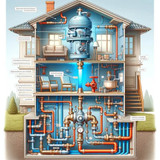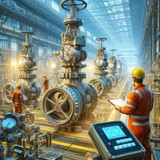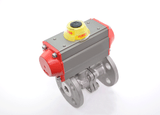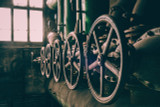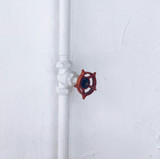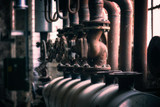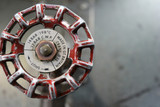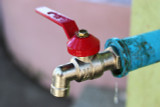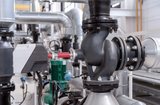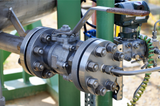Y-Strainers
Sub Categories
A y strainer is a foundational part of many different types of systems, both commercially and in industrial settings. Using appropriate y strainers can make all the difference between a mediocre system and an efficient one. Let's take a closer look at the Y filter strainer, what it is, and how to choose one for your application.
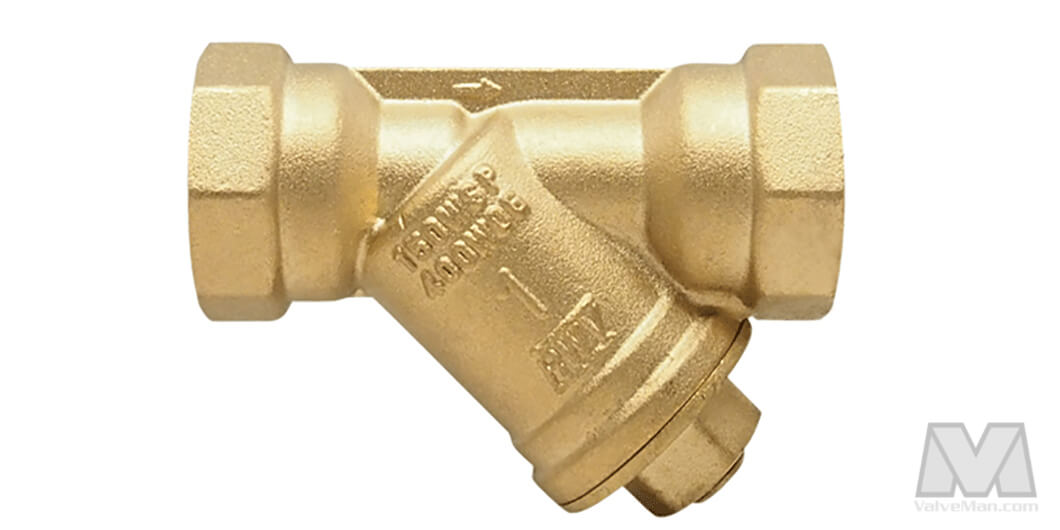
What is a Y Strainer?
A y strainer, or wye strainer, is a type of mechanical device used to filter unwanted particulates and solids from fluid pipelines. The fluid may take the form of a liquid or a gas.
Y strainers get their name from the fact that they are roughly shaped like the letter 'y'.
This type of mechanism consists of three main parts. Namely, the body, the strainer, and the inlets and outlets. The fluid flows in through the inlet, travels through the strainer, and leaves through the outlet. Unwanted solids and contaminants flow out through the other outlet.
What Are the Common Applications of Y Strainers?
Because the y-type strainer has uses in so many applications and industries, It has many potential purposes. Some of the ways that y strainers may be used include the following:
- Chemical Processing: Chemical processing plants often make use of y strainers to help protect sensitive equipment from debris and potential clogs.
- Water Treatment: Water treatment facilities use y strainers to remove solids and debris before water gets processed.
- Oil and Gas: The oil and gas industries use these strainers in pipelines to ensure that no solids or contaminants remain within crude oil or natural gas.
- Power Generation: Power plants use y strainers to protect sensitive equipment from debris and contaminants.
- Food and Beverage: In food processing plants, y strainers may be used to filter fluids like sauces and beverages.
- HVAC Systems: HVAC systems incorporate y strainers to ensure that coils and heat exchangers remain clog-free.
- Pulp and Paper: Paper manufacturing plants often use y strainers to remove impurities and pulp debris from the papermaking process.
Y Strainers - Available Materials and Sizes
The Y-type strainer comes in an array of different materials, including the following:
- Stainless Steel
- Bronze
- Lead-Free Bronze
They can also be found in a variety of different sizes, ranging all the way from ½-inch to 2-inch. The sizes in between include standards like ¾-inch and 1¼-inch, with many other sizes available as well.
It's also worth noting that the ends may be either threaded or soldered. It's essential to consider all these things carefully before you buy a y strainer. The size of your system, the type of fluid you're transporting, and the contaminants you're removing all play a part in choosing the right strainer.
What Are the Advantages of Using Y Strainers?
There are many potential advantages to using y strainers, Which can include the following:
- Cost-effectiveness: Because they’re long-lived and efficient and save wear and tear on system parts, y strainers are incredibly cost-effective.
- Versatility: Due to their efficient universal design, y strainers can easily be used in a wide variety of different systems.
- Debris removal and system protection: y strainers perform a vital function in protecting the system from damage by removing potentially damaging contaminants.
- Improved system performance: By helping to keep the system clear of debris and helping to prevent clogs and contamination, y strainers improve the overall performance of the system.
- Longevity: If properly maintained, Y-type strainers can last for a very long time. This contributes not only to system efficiency and ease of maintenance but also to the overall cost-effectiveness of the system.
Frequently Asked Questions (FAQs)
How Do I Select the Right Y Strainer for My Application?
Selecting the right y strainer for your application is relatively straightforward. Mainly, you need to consider the following:
- The type of fluid that you'll be handling in your application. This helps you to determine what material the strainer should consist of.
- The size and pressure rating of your system's plumbing.
- The connection type your y strainer needs to fit into the rest of your system.
- The type of particulates you need to remove. This will help you determine the required screen size.
After considering all these things, you'll know how big the strainer should be, what it should be made of, the connection type required, and the strainer size.
How Should Y Strainers Be Maintained?
Y strainers require more regular maintenance than some other kinds of valves due to their application. Since their sole purpose is to remove particulates and contaminants, they require regular cleaning to help keep them in working order.
Other types of maintenance that you may want to do once in a while include checking for leaks and ensuring that the valve is not corroded.
Where Can I Buy Y Strainers?
You can buy your y strainers right here at ValveMan. We have a wide range of different valves and strainers for every application. From ball valves to butterfly valves, y strainers to electric actuators, the selection is nearly limitless.
Our Posts
View AllUnderstanding Valve Actuators: Manual, Electric, Pneumatic and Hydraulic
Are you a beginner new to the valve world, ready to learn more about the various types of valve actu …
Read More3 Check Valve Mistakes to Avoid
So, you’re looking for a check valve, but you’re not sure if there’s any pitfalls …
Read MoreTypes of Valves in Plumbing
Have you ever wondered what goes into managing the flow of water in your home, or through a building …
Read MoreIntroducing Apollo Valves
Apollo Valves® inventory includes a wide range of valve products supplied to diverse markets. Th …
Read MoreUnderstanding Valve Sizes and Measurement
Sizing the appropriate valve is critical to ensuring the performance of your system. Whether you'r …
Read MoreTypes of Water Valves
Hey there, fellow valve enthusiasts! We all know that valves play a crucial role in regulating th …
Read MoreWhat is a Backflow Preventer, and How Does it Work?
When a simple check valve is inadequate for the job, you need a backflow preventer. But knowing …
Read MoreValve inspection - main points of valve testing in Manufacture setting
Industrial facilities rely on different types of valves (such as check valves, for example) to con …
Read MoreTypes of Ball Valves
Ball valves are important components in a vast range of systems, from small family-owned workshops …
Read MoreUnderstanding valve standards and specifications
Hey there, fellow valve enthusiasts! Today, we're looking at valve codes, standards and specifica …
Read MoreHow to Tell if a Valve is On or Off
We have all been there before. You are staring at a valve; you know that you should know if it …
Read MoreUnderstanding Different Types of Valve Connections and Fittings
Hey there, fellow valve enthusiasts! We know valves play a crucial role in regulating the flow of li …
Read MoreTypes of Valve Handles: Lever and Handwheels
Whether you're involved in industrial work, plumbing, or you're a DIY enthusiast, you come ac …
Read MoreThe Basic Parts of a Valve
Valves quietly work in many different areas, even places you wouldn't expect. They're truly every …
Read MoreGas Ball Valves In Industrial Applications - 5 Things to Keep in Mind
Unlike the standard ball valves, most gas ball valves are tested and approved by CSA. These valves a …
Read MoreHow To Correctly Use A 3 Way Valve In Different Applications
To understand the "T"-port and an "L"-port 3-way valves and what makes them different, it's importan …
Read MoreIndustrial Ball Valves - 9 Questions To Make The Right Choice
Ball valves are versatile flow control devices suitable for extensive industrial applications. They …
Read MoreEverything you need to know about valve types
Valves play crucial roles in production lines and equipment performance across a multitude of ind …
Read MoreWhat is a Duty Cycle and How Does it Relate to Electric Ball Valves?
Electric actuation improves the efficiency of processes by maintaining the accuracy of the re …
Read MoreActuated Butterfly Valves 101: All You Need To Know About Their Application In Piping Systems
Butterfly valves are quarter-turn flow control or isolation devices, used for quick shut-off in p …
Read More





